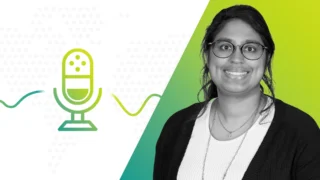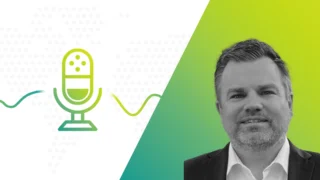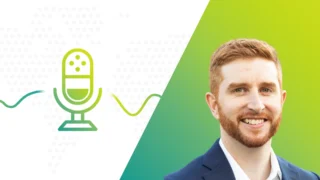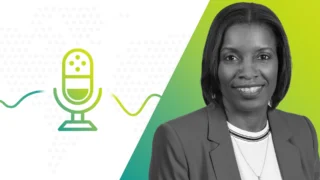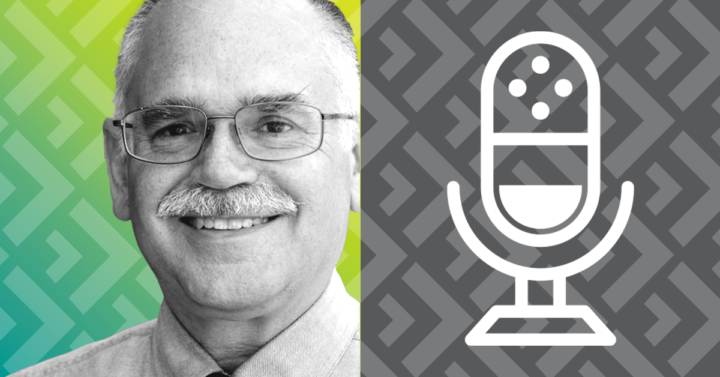
The education of actuarial candidates at the university level has undergone several changes over time, as instructors respond to developments in actuarial knowledge, required skill sets, and expectations of both students and future employers. In this episode, Bruno Gagnon, FCIA, reflects on some of the challenges he has faced over the years in this area as a long-time instructor of university-level actuarial courses.
NO TIME TO LISTEN? READ THE TRANSCRIPT.
Host: Welcome to Seeing Beyond Risk, a podcast series from the Canadian Institute of Actuaries.
Canada is very fortunate to have a strong network of universities that offer programs in actuarial science. However, the education of future actuaries can be challenging due to advances in the actuarial knowledge as well as involving expectations for students.
One CIA member who has been teaching actuarial courses at the post-secondary level for several years now is Bruno Gagnon, and he joins us today to talk about how he approaches these challenges.
Thanks very much for coming on the podcast today.
Gagnon: Thank you very much. It’s my pleasure.
Host: To start off, maybe just tell us about how you’ve been involved with teaching actuarial courses throughout your career.
Gagnon: Well, I started being interested in education when I became a Fellow in 1986. At that time, I had to pass 10 exams to become a Fellow of the Society of Actuaries and then a Fellow of the Canadian Institute of Actuaries.
So at that time, when I became a Fellow, I finally had the time to think of something other than simply studying. I knew that something somewhere was deeply wrong. You know, I was one of the best students in my class, and yet it took me seven years after getting my actuarial degree to become a Fellow. Moreover, I failed my last exam twice before finally, barely passing.
For two years, I was really devastated by the thought that maybe I was not able to complete anything, even after passing nine exams out of 10 and having invested so many years in my exams. If I had to put it in university time, it would be 10 years. So, after investing so many years in my exams, I was at the risk of remaining an Associate. So, remaining at the same level that I had reached one year after completing my degree, or if you prefer, five or six years before becoming a Fellow, so I would have basically lost six years of my life.
The first thing I did after my SOA fellowship was to apply to be a member of an exam committee of the SOA to find out why I had so much ease with my first exams and so much trouble with my last exams. I was a question writer and grader for four years, then Vice-Chair for one SOA exam for three years, and Chair for the whole track of fellowship SOA exams for four more years.
I learned that while the SOA tried to ask analysis questions and synthesis questions – and these are questions that required more thinking than memory – well, the candidate’s standard is to learn all the code by heart and answer with lists. And the problem with the list is how it will be interpreted by the grader.
For example, if you ask a candidate how to do or to produce red wine, you expect that the candidate would start by answering, “You must grow red grapes.” But what if the candidate rather answers, “Here is the list of red grapes used to do wine”? Do you give points because you mentioned red grapes, or do you not give points because they did not mention that you must get those grapes?
And then, if, instead of giving you the list of red grapes, the candidate simply answers, “Here is the list of grapes used to do wine,” and the list includes both white and red grapes, what kind of credit would you give? It’s not clear cut, and it really depends upon the grader because you must interpret the grading outline and you must interpret the candidate’s answer.
I found out that the candidate who provided a long list that by chance includes some keywords and was not answering the question, well, this candidate was in the position to get possibly even more points than the candidate who really answered the question, but only partially, without using lists. So, this is something that I tried to change.
Now in late 1999, I had completed my term of Chair for the SOA, and I was approached by the CIA to oversee the Practice Education Course in the group insurance track. Then for the first time, I had the opportunity to influence the course of reading of an actuarial exam. And in this course of reading, I took the opportunity to include all the things that I had painfully learned over my 20 years of practice (at that time) and that were not part of SOA exams.
Basically, I saw the Practice Education Course material as a toolbox for younger actuaries; the toolbox that would contain (what I would call) the secrets of the trade. And the underlying principle or question was, “What do actuaries need to know to do their job most efficiently?” So, I thought of teaching these things that you don’t necessarily find in books and yet these things make the difference between a knowledgeable actuary and someone who knows nothing outside their routine work.
About the same time, I was recruited by a university professor to make a conference on social programs in her introductory course to actuarial science. The previous individual that was in charge of that conference had made a good job of describing the program, but this individual had not said a word about the problems and challenges facing these programs.
Now, if you provide students with a ton of factual details, there’s a risk you will bore them to death. On the other hand, if you can make them relate to important social issues and make them think about being among the three workers who will be paying for two old age security pensioners, while the program was initially set up for having five workers paying for one pensioner, then they will understand that this program will impact them directly as taxpayers before they retire and that they will have to make decisions by voting on proposals of public policy at elections. They will then be more interested rather than bored.
After a few years, the professor asked me to give 50% of the course. And after a couple more years, I think the students were rather happy with what I was teaching, and the university asked me to develop and give two other courses. In all these courses, I always made sure that I was making the students aware of the impact of what I teach on everyone’s life in general, and where possible, on their own life.
Host: That’s interesting. So, let’s talk a bit more about the perspective of students pursuing actuarial science. And maybe you could talk to us a bit about some of the differences you’ve seen over the past 20 or so years in terms of, you know, how students are interested in the actuarial career, and what their expectations are.
Gagnon: Well, the first thing I’d like to mention here is that currently there are many jobs available to graduating students, and fewer students take them compared with 20 years ago.
20 years ago, another difference was that students had to focus on their number of actuarial exams to get a job. Those who were able to complete their degree with at least three SOA or CAS exams had a reasonable chance of getting an actuarial job.
The others had the tougher journey in front of them with no guarantee of ever ending up doing actuarial work. Twenty years ago, first-year students were not aware of the then-type job market and had some unrealistic expectations. Some students chose to complete an actuarial degree simply to get a well-paid job.
And I remember meeting a former student who had decent notes; he had done a couple of exams, and I met him maybe two years after he had graduated. And he was working on putting bottles on shelves of a store. And then I also remember a foreign student who told me that they address this in a government publication, that there was a lack of actuaries in Canada.
And at the same time, I remembered that only a few years before, my employers (when I was a consultant), had hired an ASA (an Associate of the Society of Actuaries) as an actuarial technician for $27,000 per year. Because there were simply no jobs, so even ASAs were not able to find jobs. These were tough times for actuarial students 20 years ago.
Now, things are different. And what’s nice is that students are more informed. In my introductory course on actuarial science, I give them statistics about how much they can earn after they get their actuarial degree and I give them a list of local employers of actuaries.
They know that they must work hard to become actuaries, but that their hard work is not only for the sake of working hard. They also tend to be more interested in learning actuarial science than focusing on passing courses and actuarial exams.
I think they’re more excited about becoming an actuary – probably because they understand that because of the baby boomers retiring there’s a greater opportunity for young actuaries to do interesting jobs and do interesting work in their career and to analyze situations or problems rather than simply doing routine actuarial calculations.
There are still students who pursue an actuarial degree because they think it will allow them to earn a lot of money. A couple of years ago, a student asked me what he would have to do to earn $300,000/year after getting his degree. And he wanted to earn this amount three years after getting his degree. To earn that kind of money, you need to become a vice-president in an insurance corporation or a partner in an actuarial firm.
A friend of mine – who was in the same class as me in university – retired with a salary of over $1 million/year, but didn’t earn this amount as an actuary, because he was president of an insurance company. As an actuary, your income depends more on your skills, your personality, your level of responsibility, and then on your actuarial degree or fellowship. If you’re working in a consulting firm, your income will depend much more on your capability to develop and retain clients and your sales skills than on your development and technical skills.
Another difference between now and 20 years ago is the fact that 20 years ago, actuarial students saw the US educational societies, such as the SOA and the CAS, as their most important partners in becoming an actuary. Almost everyone considered that your SOA or CAS exam results were more important than your grade point average (or GPA) at university.
Now, mostly because of the University Accreditation Program (UAP), students perceive the CIA as their most important partner. And that is the very important difference.
20 years ago, students were not much concerned about the country where they will eventually work. They did not really care about the CIA, as they considered that by getting their FSA or FCAS, they would more or less automatically become members of the CIA, and their US affiliation would allow them to work in the US. Things are a little different now.
Basically, there are two types of students: those who want to become members of the CIA, with the possibility of working in other countries through a reciprocity agreement between the CIA and an actuarial organization like the American Academy of Actuaries (in the US) and other actuarial organizations in the English-speaking countries around the world.
And then, there are those who want to work in the US, but they decide to study in Canada because tuition fees are much lower here than the US, and these students will focus on passing actuarial exams. So, we already have two different clienteles that we can identify almost right at the beginning. That’s another difference between now and 20 years ago.
Hots: A couple of minutes ago you mentioned something about the skills that actuarial candidates are focused on. Can we talk a bit more about that? What are actuarial candidates really interested in and how is that impacting their career prospects?
Gagnon: Well, I would say that beside the actuarial and financial mathematics, they are more and more focused on advanced mathematical, statistical, analytical, and data skill sets. And that is quite interesting because these things are becoming more and more important, and they can do fantastic analysis using the R language.
It’s great for working in P&C (property and casualty insurance) as there’s a lot of modelling to be done there. In life and pensions, it’s not as clear to me, but I think they will eventually have to model stochastic reserves. The challenge in calculating stochastic reserves is the efficiency of your calculations.
If you want to calculate the stochastic reserve on the block of business, you need to make tons of calculations, and it can take a huge amount of CPU and processing time. And that is the reason why we have not yet seen many reserve calculations done on the stochastic basis. At some point soon, insurers will need to calculate their reserves on the stochastic basis because it is what the regulatory authorities will require, and it’s the only way to get a sense of reasonably likely deviations.
If you calculate a reserve using only averages, you will get a nice reserve, but it doesn’t tell you anything about whether your reserve is sufficient or not, or to what degree it is sufficient. What we do currently is we add margins and provisions for adverse deviations in our calculations.
It will give you a safer reserve but note the degree of safety in your reserve. Is it 80%, 90%, or 95%? No one knows. Only a stochastic process can give you this information, and all the actuaries like me, for example, don’t have the data science skills and the information technology skills required to assess the degree of safety in an actuarial reserve, much less a combination of various reserves on all the various products of an insurer.
In one of my courses, I ask students to calculate the most basic stochastic reserve that you can imagine. It’s a reserve for premium waiver in group life insurance. It’s the most straightforward and easy-to-model stochastic basis calculation for reserves. And it’s interesting; it introduces them to the fact that “OK, here’s the reserve based on the traditional method.”
And now here’s the reserve based on the stochastic method, and you have a dispersion with the results of zero stochastic reserves, and you can see here’s the average reserve. Here’s the reserve that is safe at 60%, 70%, 90%, 95%, and so on. So, I think this is fantastic, and the young are really the ones who are the best to do this type of work.
And I think universities are doing a tremendous job of teaching students to think about randomness and variability of results without data mining and big data, which are concepts that are beginning to be used.
This will require a lot of analysis. But who will do this analysis? It can be data scientists, it can be actuaries, or it can be a mix of actuaries and data scientists. In all cases, actuaries will need to understand the analysis, and preferably they will need to participate in the analysis. Even if it’s only to get the sense of the variability of the results and of their interpretation, because you just need to change an assumption somewhere and you can get wildly different results.
And when you talk about big data and data mining, it’s not self-evident. Inadvertent biases may arise in any analysis, and actuaries will need to be able to track and remove such eventual biases. And for that, they will need strong data and predictive analytics skills. That’s also the way the actuarial society is, just like how the CIA are moving too.
We’re giving more and more importance to predictive analytics and these types of skills. And another important area of skill sets that will become more and more important for actuaries is the skills related to finance and investment.
Almost every actuarial calculation that you can do involves an interest rate (or a rate of return, if you prefer). It’s becoming increasingly hard for actuaries to rely on economic assumptions made by someone else, especially in the current times when the interest rates are moving, inflation is coming back.
And even if you use an assumption developed by someone else, you must be able to understand that assumption and make your own judgment on it before you decide to use it or not. Finance courses are getting more and more important than actuarial programs, and I think new actuaries will have a stronger skill set in this domain (which used to be the case 25 years ago).
Another skill set that is underestimated and that is currently not found in many actuarial programs because it flies below the radar is management skills. Because when you become an actuary, after a few years, you end up managing people.
And you need to have a sense of how to interact with people who report to you and how to treat them so that they feel appreciated. And if they make a mistake, you need to be able to explain to them that “OK, you made a mistake. You’re not the first person nor the last to have made a mistake.” It’s important to pick up the mistake and correct it, but it doesn’t make you a bad actuarial student, and it doesn’t make you a bad actuary because you made a mistake.
Mistakes are simply human, so management skills are something that I would recommend young actuaries to try to develop at least a bit. That’s it for the skills or skill set.
Host: Can you talk a bit about some of the advantages that you see for students that are enrolled in an actuarial program? And I want to do that in contrast to students that operate strictly in the self-study mode as they pursue their qualification requirements.
Gagnon: Well, this one is quite easy for me. And I really love this question because from my point of view, there is a huge advantage in being part of an actuarial program over something by yourself.
First of all, you benefit from the explanations of a teacher. If you want to learn something, you must understand it. If you’re alone with a book, you don’t necessarily get the explanation that the author of the book – being a specialist – may have considered as crucial to be included in the book.
A good example that I can give you when I was studying. At that time, it was the old Part 8 exam on Financial Investment, and there was a book referring to something called “IOU.” Being a francophone, I had no idea whatsoever of what the “U” was. Well, it was an “I owe you,” as in “I owe you money.” But for a francophone, I simply had no idea what the “U” meant. It was just too trivial to be included in the book.
If you learn something without its context or environment, you will miss a significant portion of the topic and you may end up learning it by heart, which is not the most useful thing if you need to apply the knowledge to a situation that is not shown in the book.
Second, you benefit from the questions raised by your classmates. Often, you read the material and you think that you have understood everything, especially with the benefit of your teachers’ explanations. Then, someone asks a question that you would never have thought of but happens to be relevant. It’s only in class that you can benefit for from this type of situation.
Third, it’s so much more stimulating. You will try to keep the pace with the other students, and you can’t discuss problems with them if you’re alone. You may find that the material you’re studying is boring. Then, you can read your material too slow, and so slowly that you cannot make links with what you have read a few days before or a few chapters before. Or you may finish reading a chapter and not remember what you have read. This happened to me.
Worse, you may be reading your material while you’re thinking of something else. Because you’re alone in – let’s say a small box – it’s much more difficult to remain focused. While I was doing my actuarial exams, I used to count my hours of study because everyone counted the hours of study, and everyone compared with everyone. And sometimes, I ended up studying hours and hours … maybe more for the sake of studying so many hours and putting these hours on record. These hours of study were not necessarily good hours, so there’s a trap here if you think you have studied sufficiently, but you have not studied efficiently. This can very well happen if you’re studying alone.
Fourth, you don’t lose time if you’re studying in an actuarial program. If you’re studying by yourself some form of actuarial mathematics or application of actuarial mathematics, you may have to solve the problem for which you only have the numerical answer in your book. If you’re within a group and have a teacher, either someone in the group or the teacher will already have solved the problem and can explain to you the steps for solving this problem. And most importantly, the reasons behind each step.
If you’re alone, you may end up guessing what should be the steps. Sometimes, you simply don’t start on the right foot to answer a question because you know the answer and know the questions, but you’re clueless as to how to address it.
Fifth, if you don’t want to fall behind the others, you must keep the pace to avoid ending up in a situation where you think you’re making a good progress while you are two or three weeks behind the others.
Because when you’re studying by yourself, you simply don’t know where the others are. So that’s also something quite important because it allows you to make sure you keep the pace.
Another huge advantage of being in an actuarial program is the fact that in Canada, there are 11 universities who are part of the University Accreditation Program (UAP) of the CIA. If you’re in a program that is accredited, you can get your ACIA designation more rapidly than by studying exams of the SOA or the CAS.
Another thing – if you’re in an actuarial program that is accredited by the CIA, you avoid a lot of duplication. Because if you’re in self-study mode, you would probably still have some courses on actuarial material. But then you have to re-study to pass actuarial exams.
If you’re in an accredited program, you just need to get your degree, do two modules, pass one exam, and then you become an ACIA. So, it’s a huge advantage for being in an actuarial program compared with doing things by yourself.
So, from my point of view: being in the actuarial program is by far much better than studying by yourself. I passed all the exams that were related to things that I had studied in the university; I passed these exams quite rapidly. Things that I had not studied in university took me forever to be able to pass (at that time).
Host: Let’s wrap up with a final question here. And I just want you to reflect on your perspective as an instructor. I know one of the big challenges is keeping course material current and up to date with developments in the actuarial world. How do you do that? And what’s your preferred way to make sure that all your courses’ content stays current and relevant?
Gagnon: Well, that’s another very good question. Of course, your material needs to be current. There’s no need to teach things that do not exist anymore unless you’re teaching history or you’re providing your historical context.
Regarding actuarial science, the first place to look for recent developments is on the CIA website, especially the research documents, the educational notes, and the presentations made at recent CIA General Meetings.
If something is new and important, it will necessarily be discussed during the CIA’s General Meeting. There will be material – such as slides – that will be made available on the CIA website. I think for non-members of the CIA, I think six months after the presentation, but since I’m a member of the CIA, I get the documents right away.
Moreover, you will find the names of the speakers. They are presumably knowledgeable on the topic, so there’s a reasonable chance that by searching on Google their name and the name of the topic, you may get access to research or analysis that was made by one of the speakers from CIA’s General Meeting. That gives you even more documentation to update your course.
Another source is the research done by other actuarial organizations, like the SOA, the CAS, the IFoA, and so on. And then a source that’s often overlooked is simply the news. When something important happens, it will be in the news. For example, one month ago, the bad returns of the Caisse de dépôt et placement du Québec made the headlines. This may have an impact on our contribution rate to the Québec pension plan.
And if you remember during the commercial asset-backed paper crisis in 2008, the rate of return on the Québec pension plan assets was -26% while the return on the CPP assets for the same year was -18.6%. A deficiency of approximately 7.5%. And thereafter, returns have been similar on the assets of both plans.
So, there’s a net deficiency of 7.5% for the QPP due to the investment in commercial asset-backed paper. And the only way to offset losing 7.5% of your pension fund is through a higher contribution rate. So, don’t be surprised – if you compare the contribution rate to the QPP and the contribution rate to the CPP, they are different.
Another source of actuarial information is actuarial or financial reports, like the reports on the CPP, the QPP, the employment insurance programs, all these security programs and all these programs that are managed by the government. You should see there’s a lot of analysis that’s been done by the actuaries of these programs, and you can read into this analysis and sometimes find interesting things.
And most generally, you can find a lot of things on the web. Unfortunately, what you find or what you don’t find depends on the extent of your search. And oftentimes my wife and I search the same thing and we end up at very different places on the web simply because we don’t use the same keywords, or we search differently.
Whatever you search or find, you must always hear your judgment to make sure that you understand what you have found. The internet is a very interesting and valuable source, but you need good common sense. Because something written on the on the web may or may not be true. You must validate, and counter-validate. But overall, the internet is a great source of information.
Host: Wonderful. Well, we covered a lot of ground today, so thanks very much for joining us on the podcast.
Gagnon: It was my pleasure.
Host: And quite relevant to this episode, we have recently launched a new site covering all the exciting changes to the CIA qualification requirements, so we invite you all to check out education.cia-ica.ca.
We now have over 100 episodes in our podcast series going back over the past 3 years, so we encourage you all to subscribe, and you can do that through whatever platform you use to get your podcast content.
And we’d like to also hear from you! So, if you have any suggestions or episode ideas, you can send them to podcasts@cia-ica.ca. As well, we’re always looking for content to add to our Seeing Beyond Risk blog, so if you have any ideas you’d like to share, you can reach us at seeingbeyondrisk@cia-ica.ca.
Until next time. Thank you for tuning in to Seeing Beyond Risk.
This transcript has been edited for clarity.

